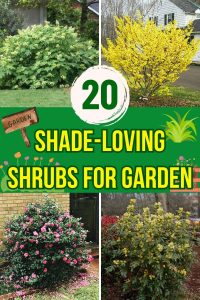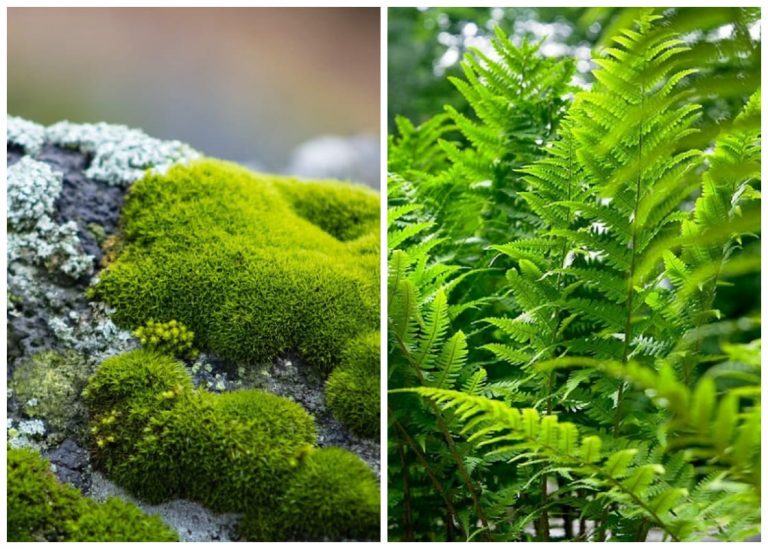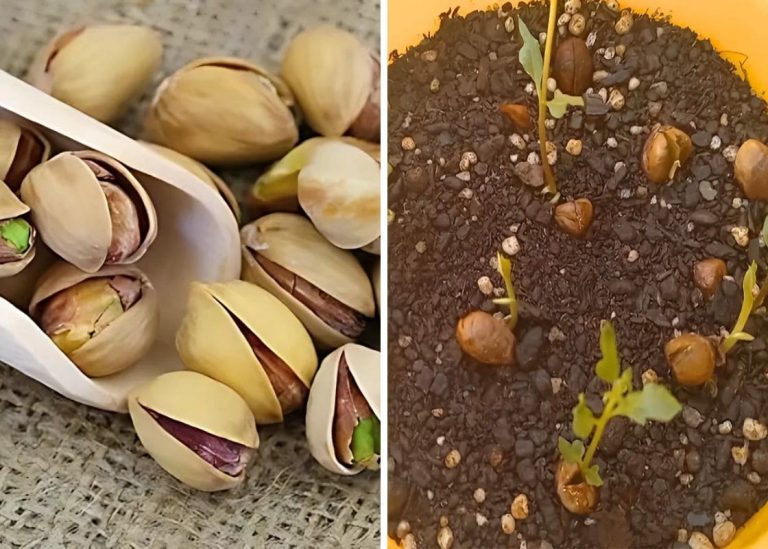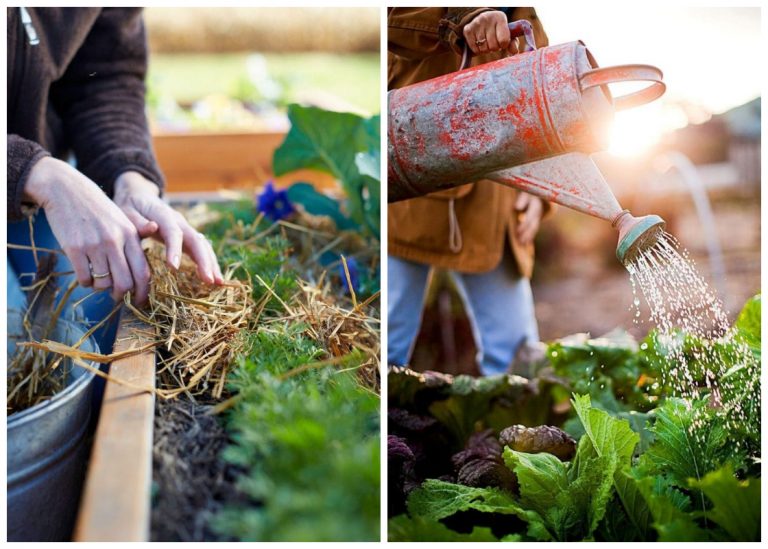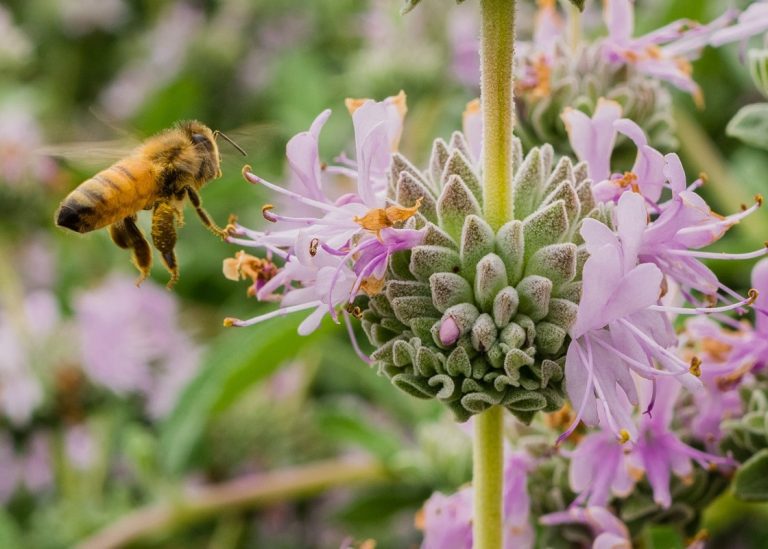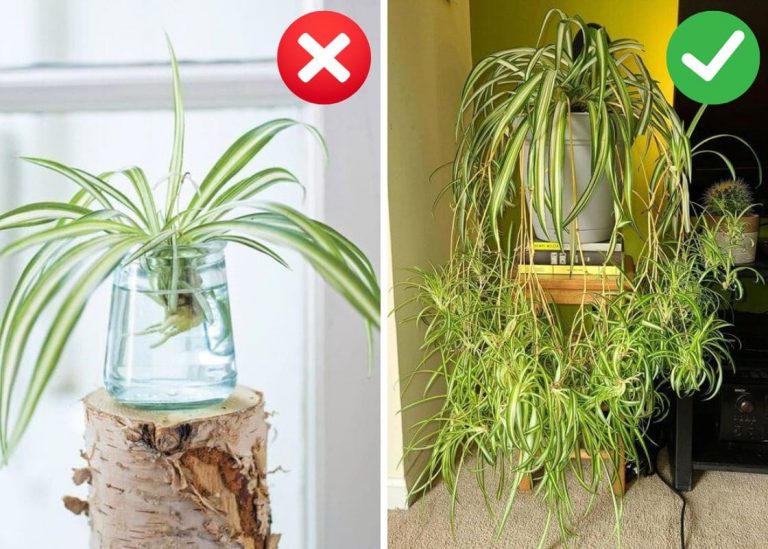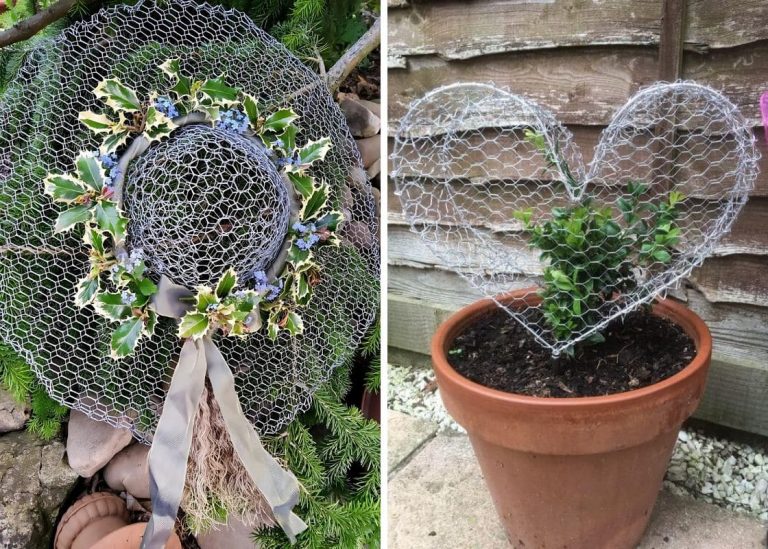20 Shade-Loving Shrubs to Brightening Shady Spots
There’s a shaded corner behind my garden shed where sunlight barely kisses the soil. For years, I ignored it—convinced that no plant could thrive in such dimness. It became the resting spot for unused pots, broken tools, and a stack of old bricks that never found a home.
Then one spring, after a long rainy season, I noticed something remarkable: moss had crept over the edges of the bricks, and a fern—uninvited but very much welcome—had unfurled in the corner. It wasn’t grand, but it was alive. And for the first time, I realized that beauty doesn’t always need sunlight to bloom.
Since then, I’ve fallen in love with shade gardening. There’s a quiet kind of magic in watching plants thrive where most others won’t. They teach you to soften, to slow down, and to see subtlety where others only see gloom.
So if you’ve ever looked at the shaded patches in your yard and felt stuck—unsure what to do with them—this list is for you. These 20 shade-loving shrubs have changed the way I see dark corners, and I hope they’ll bring your quiet spaces to life too.
#1. Hydrangea
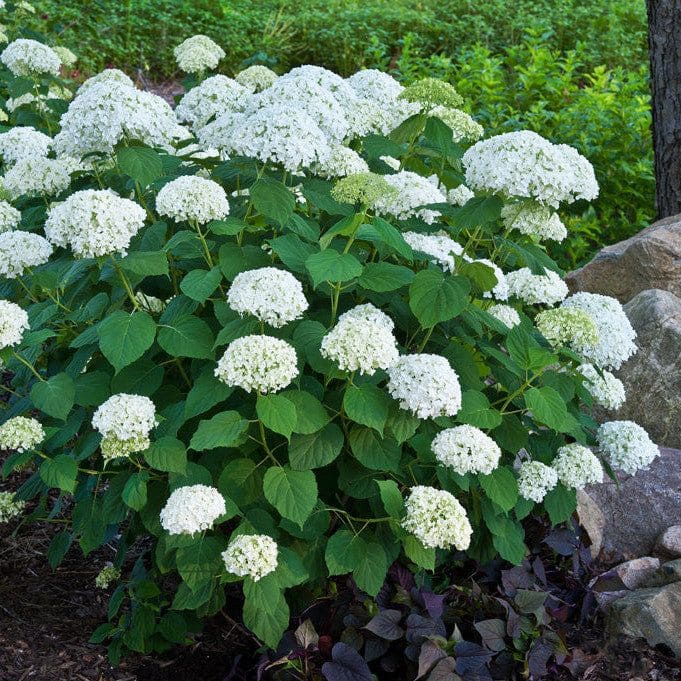
It started with a gift. A dear neighbor brought over a potted hydrangea one spring after my first garden season—a celebration, she said, for sticking with it. I didn’t know much about hydrangeas then, but I planted it along the north fence where nothing seemed to flourish. By summer, it had transformed that gray stretch of garden into a burst of soft blues and pinks.
What I love most is how hydrangeas glow, even in dappled light. Their full, rounded blooms feel like bouquets growing right from the soil.
Care Tips:
-
Prefers partial shade (morning sun, afternoon shade).
-
Keep soil moist and slightly acidic for the best color.
-
Add mulch around the base to help retain moisture.
Note: Aluminum sulfate can help turn your blooms blue, while lime brings out pink tones—it’s like painting with nature.
#2. Japanese Andromeda
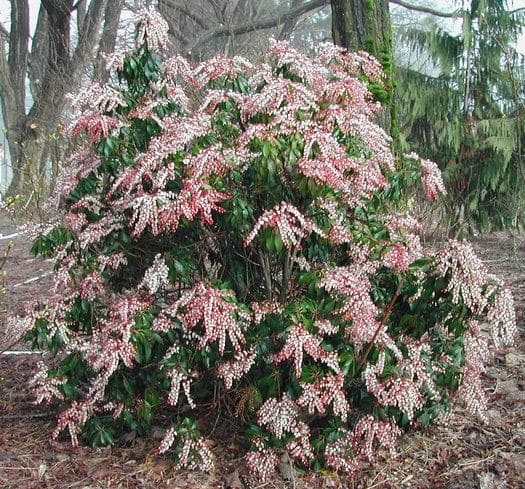
I first noticed Japanese Andromeda in a shaded woodland garden while traveling through the mountains of northern Japan. Its bell-shaped blooms hung delicately like fairy lanterns, and the deep green leaves gleamed in the misty light. It was subtle, but captivating.
Back home, I planted one beside the stepping stones near our shaded path. Now, in early spring, its flowers bloom when little else dares to try.
Suggestion: Tuck it near a walkway where you can see the tiny flowers up close. They’re easy to miss, but unforgettable when noticed.
#3. Camellia
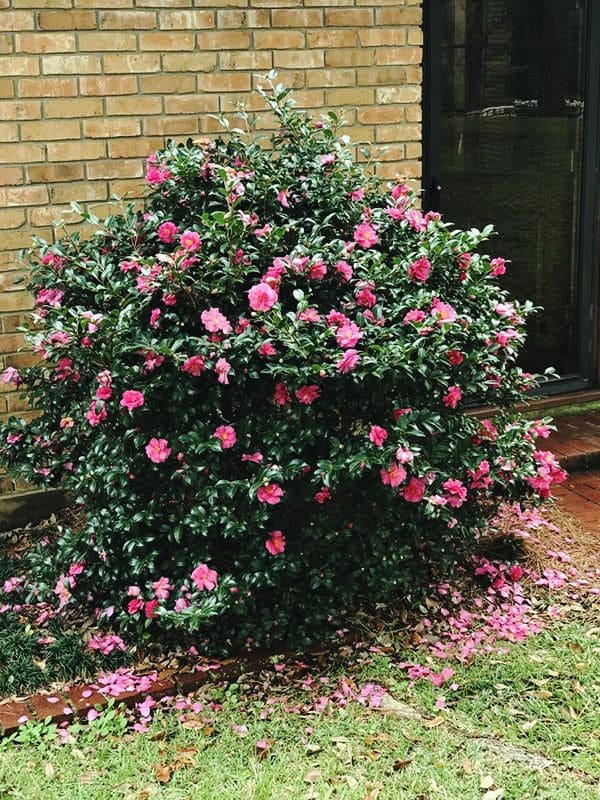
Camellias are a classic choice for shade, with their glossy green foliage and stunning rose-like flowers that bloom in late winter to early spring. They thrive in dappled shade and acidic, well-drained soil.
Mulching around their base helps retain moisture and keeps their roots cool.
Care Tips:
-
Thrives in dappled shade or morning sun.
-
Needs acidic, well-drained soil.
-
Mulch helps keep roots cool and moist.
Note: Choose early, mid, or late-blooming varieties to stretch your bloom season across fall to early spring.
#4. Rhododendron
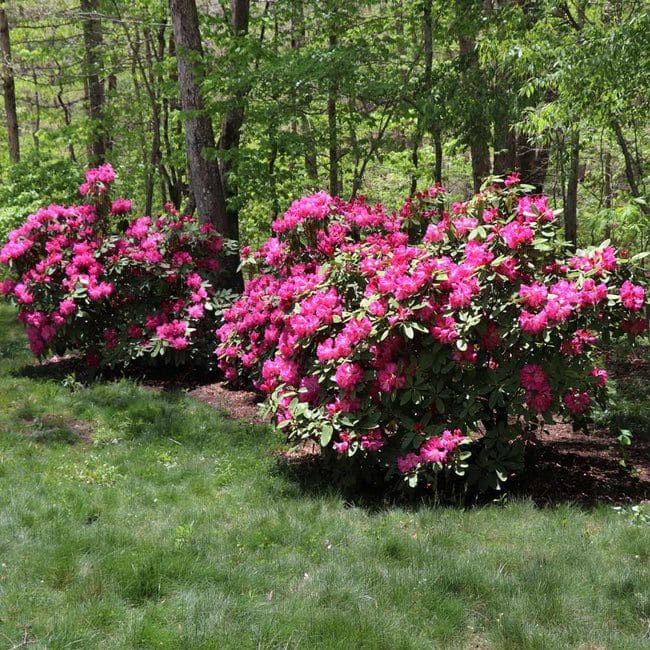
When I moved into my first home, there was already a rhododendron planted beneath a massive oak tree. I nearly dug it up, thinking the shade would choke it. But then spring came, and it exploded with magenta blooms that looked like velvet fireworks.
Since then, I’ve added more—white, pink, and even a deep purple. They’re dramatic, yes, but never fussy. And their leathery leaves keep structure in the garden all year round.
Care Tips:
-
Needs filtered light and humus-rich, acidic soil.
-
Water regularly during dry spells.
-
Loves pine needle mulch—it feeds the soil and holds moisture.
#5. Azalea
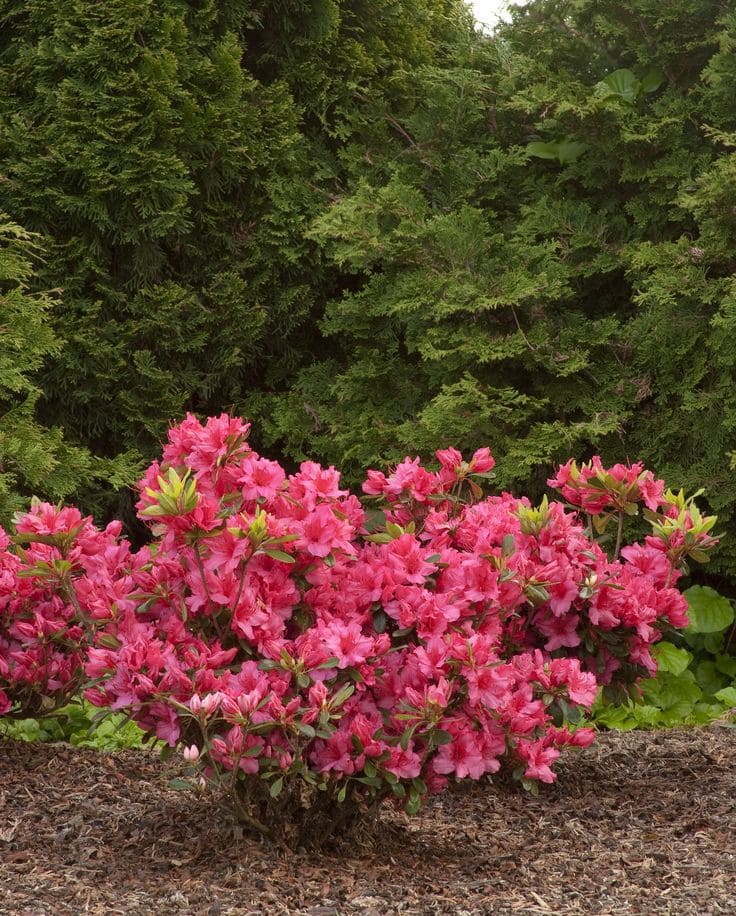
A close relative of rhododendrons, azaleas produce vibrant, funnel-shaped flowers in spring.
They prefer partial shade and well-draining soil. When grouped together, their bursts of color can make a shaded area come alive.
Alternative: If you’re tight on space, look for dwarf azalea varieties—they pack the same color in a smaller form.
#6. Japanese Kerria

I first stumbled across Japanese Kerria in a friend’s woodland garden. It was early spring, and the rest of the space still looked sleepy—but this one shrub was dancing with bright yellow, pom-pom-like blooms. Even in the soft, gray light under the trees, it felt like it was catching sunshine and tossing it around.
She told me it was one of the easiest plants she’d ever grown—no complaints, no special treatment. Just cheerful blooms and graceful arching stems that added movement to the garden.
Tips & Notes:
-
Thrives in partial to full shade and adapts to most soil types.
-
Prune after flowering to encourage new growth and repeat blooming in summer.
-
Let it grow loosely if you want a natural, romantic feel.
#7. Boxwood

You’ve probably seen boxwood before—it’s one of those shrubs that does its job without needing praise. My neighbor has a row of them along her shaded side yard, trimmed just enough to look elegant but never overly fussy. They stay green all year, even when everything else has gone bare.
I admire their reliability. Not dramatic, not showy—just steady and full of form.
What Makes It Great:
-
Grows well in part shade and can handle shaping.
-
Ideal for borders, low hedges, or geometric structure.
-
Slow-growing, which means less trimming over time.
Note: Watch out for poor drainage—it likes things on the drier side, especially in winter.
#8. Mahonia
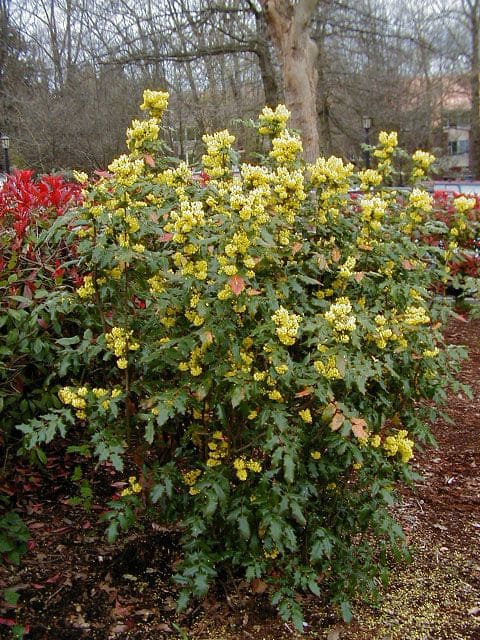
With its spiky leaves and clusters of fragrant yellow flowers, Mahonia is a striking addition to any shaded garden.
It thrives in partial to deep shade and tolerates a range of soil types. Its flowers attract pollinators, and its blue berries feed birds.
Care Tips:
-
Loves deep or partial shade and tolerates most soil conditions.
-
Water regularly the first year to help establish it, then it becomes fairly drought-tolerant.
-
Let it spread naturally or use it to create height and structure in woodland designs.
#9. Sweet Box
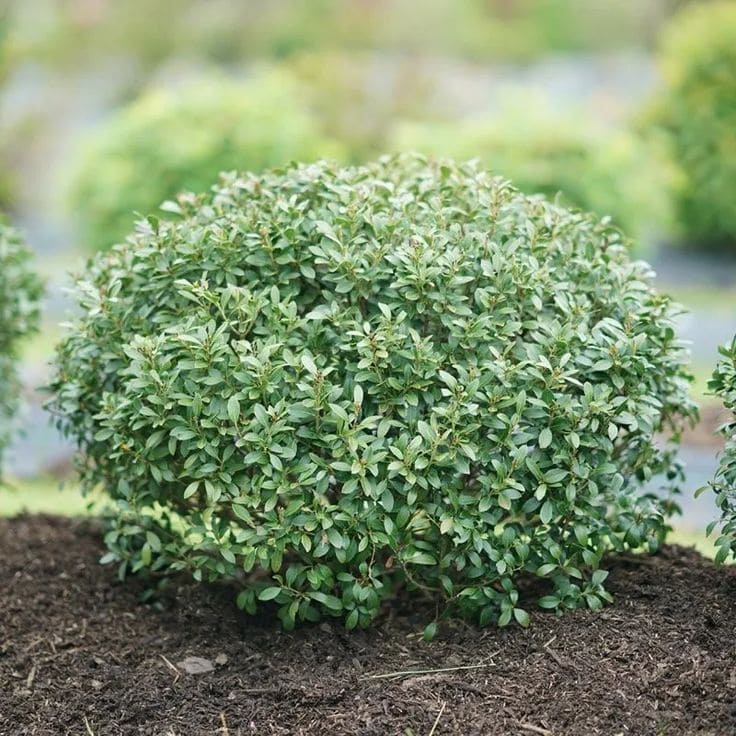
I learned about sweet box from a friend who’s an estate gardener. She said it’s the one shrub she always recommends for shade because “you’ll smell it before you even know it’s there.” That stuck with me. When I finally encountered it—tiny white flowers tucked beneath glossy leaves—I understood. The fragrance was soft, sweet, and completely unexpected.
It’s the kind of plant you tuck beside paths or near your back door, where you can catch its scent in winter without even trying.
Tips & Advice:
-
Best in full to partial shade and tolerates dry soil once established.
-
Keep the soil loose and rich with organic compost.
-
Don’t expect flashy blooms—this one’s about subtlety and scent.
#10. Winter Daphne

Known for its intoxicatingly fragrant pink or white flowers, Winter Daphne thrives in partial to full shade.
It prefers well-drained, slightly acidic soil. Plant it near a path or patio to enjoy its scent.
Care Notes:
-
Prefers partial shade and slightly acidic, well-drained soil.
-
Avoid moving it once planted—it dislikes disturbance.
-
Mulch lightly, but keep it away from the crown to avoid rot.
Suggestion: If you’ve struggled with it in the past, try planting in a large pot with good drainage—it gives you more control over the conditions.
#11. Fatsia Japonica
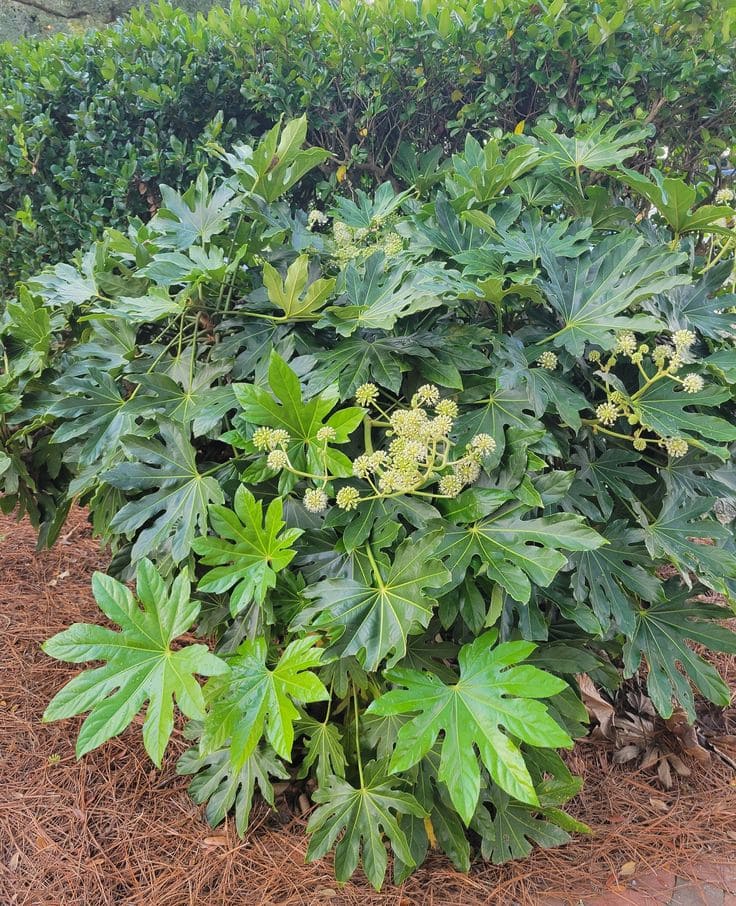
I remember standing outside a cozy café tucked beneath a canopy of trees, when I spotted something bold and deeply green growing in the corner of the patio. Its leaves were massive—almost theatrical, like something from a tropical dream—and it turned out to be Fatsia Japonica.
It was thriving in nearly full shade, in a tight corner I would’ve never guessed was plant-friendly. And yet, there it was, stealing the show with nothing but presence.
Why I Think It’s So Striking:
-
Perfect for deep shade where nothing else dares to grow.
-
Large, glossy leaves add structure and drama.
-
It tolerates cool climates and even a bit of coastal wind.
Tip: Give it moist, well-draining soil and a sheltered spot to protect those big leaves from harsh winter winds.
#12. Coral Bells
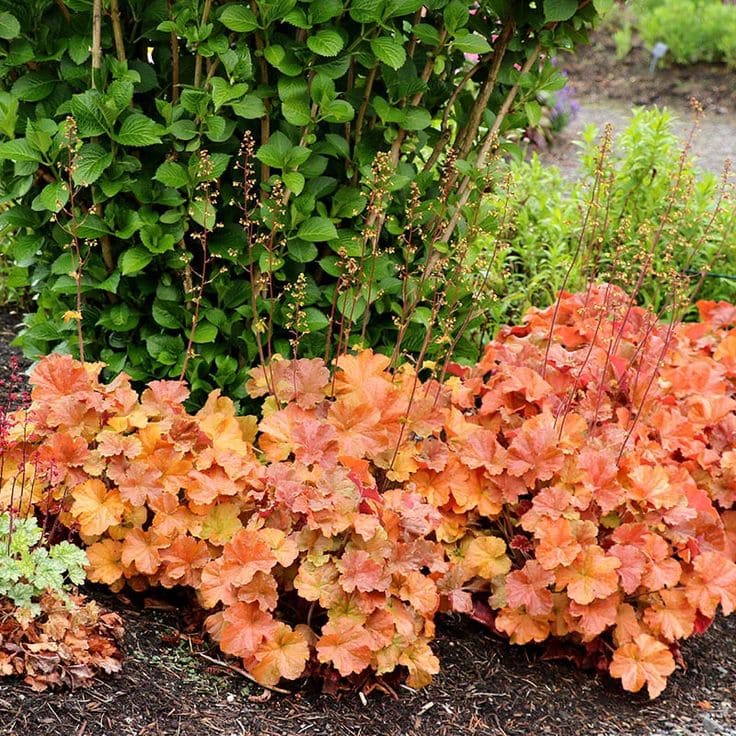
Although technically more of a perennial, coral bells can be used as low shrubs in shaded gardens.
Their brightly colored leaves, ranging from lime green to deep burgundy, make them stand out. They prefer partial to full shade and well-drained soil.
Suggestion: Pair coral bells with ferns or hostas for a soft, woodland-style mix.
#13. Spotted Laurel
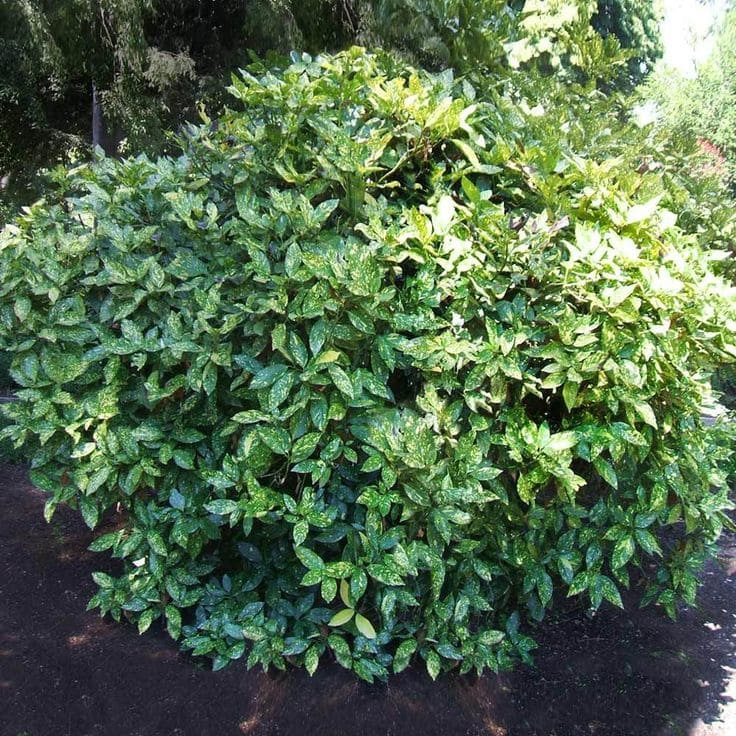
I first saw Spotted Laurel in a London courtyard garden—its large, glossy leaves speckled with yellow looked like sunlight had been brushed right on. Even on a gray day, it lifted the whole space. I haven’t planted it myself yet, but it’s been on my mind for years as something to brighten our narrow side yard.
It’s not just pretty—it’s reliable. And that’s a quality I’ve learned to admire more and more.
What Makes It a Quiet Star:
-
Loves deep shade and adapts to less-than-ideal soil.
-
The yellow-speckled foliage adds brightness without blooms.
-
It’s evergreen, so it provides structure all year long.
Tip: Keep it pruned if you’re working in a smaller space—it responds well and holds its shape nicely.
#14. Viburnum
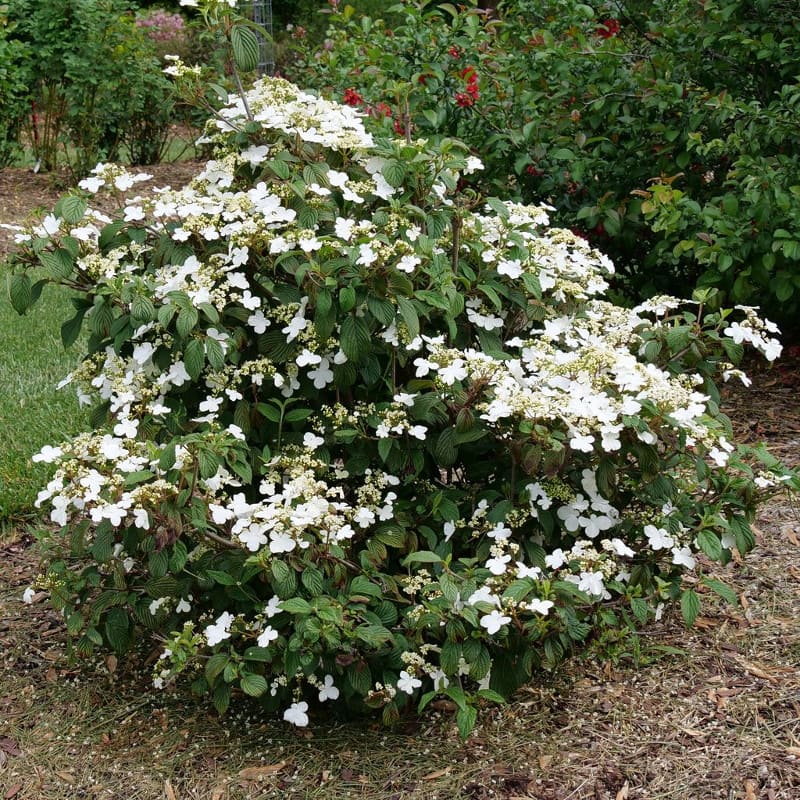
Viburnums feel like the friend who’s good at everything. I’ve walked past them in spring, covered in sweet-scented flowers. In summer, they’re loaded with berries. In autumn? Fiery red leaves. There’s even a spot in our local park where a viburnum hedge turns almost burgundy by October—it’s stunning.
Though not all viburnums love shade, there are varieties like Viburnum tinus that handle it beautifully.
Suggestion: Plant it near a path or patio where you can enjoy the changing seasons up close.
#15. Witch Hazel
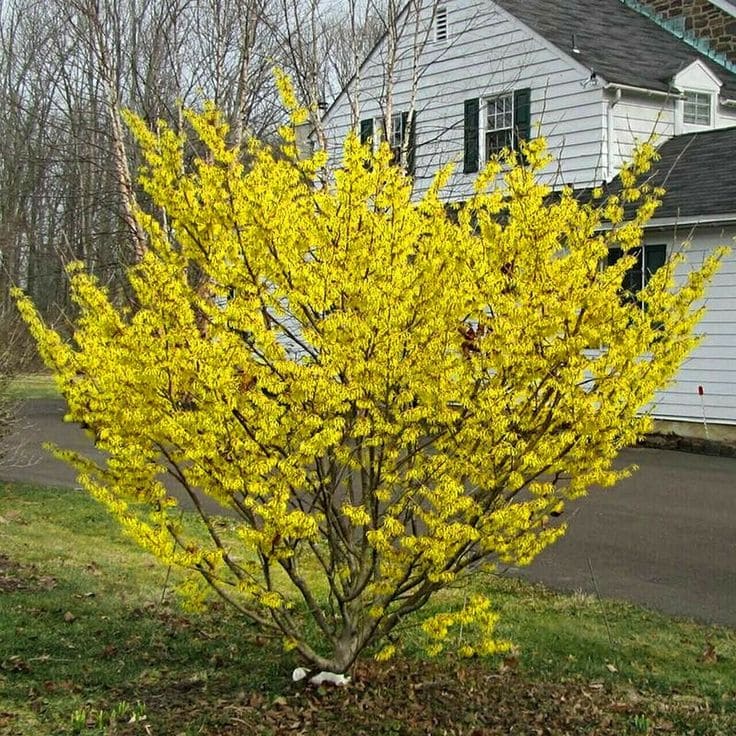
Witch hazel is one of those plants that whispers rather than shouts. I saw one bloom in February once—its spidery yellow flowers stretching out like little sunbursts on bare branches. There was snow on the ground, and still, it was blooming. I stood there with cold hands and a warm heart.
It’s the kind of shrub that surprises you. You don’t think much of it… until it becomes the only thing blooming when the world is gray.
Note: Give it a little space—it can spread out with time and needs airflow to stay healthy.
#16. Oakleaf Hydrangea
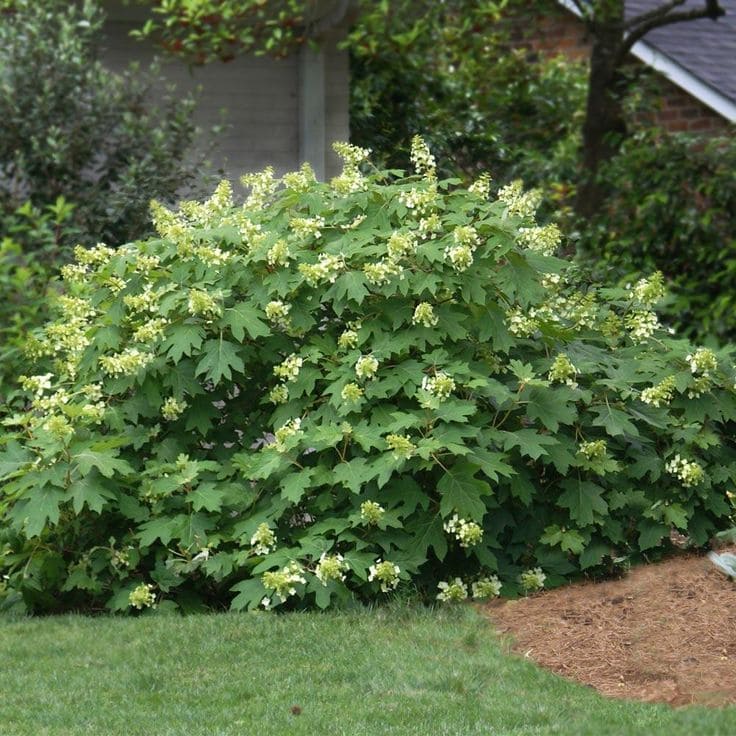
I remember visiting a woodland garden one fall afternoon—mist in the air, leaves underfoot—and there it was: an oakleaf hydrangea, its foliage turning shades of rust and wine, its white flower cones fading to antique rose. It felt like a shrub plucked from a storybook.
What struck me wasn’t just the blooms (though those are spectacular in summer). It was how alive it looked in autumn, when most other shrubs were fading into the background.
It thrives in partial to full shade and well-drained soil, adding texture and seasonal interest to your garden.
Note: Its exfoliating bark and bold leaves give it year-round interest—even in winter.
#17. Skimmia

A gardener I admire once told me that Skimmia is “like a little festival all year long.” I finally saw one in her garden: glossy green leaves, fragrant spring blooms, and clusters of bright red berries glowing against the shade like tiny ornaments.
It felt cheerful. Confident. Almost festive—without needing much attention at all.
Care Tips:
-
Prefers full to partial shade with moist, well-drained, acidic soil.
-
Needs both male and female plants nearby to produce berries.
-
Mulch yearly to keep roots protected and moist.
Tip: Plant near a path or entrance to enjoy the scent and color up close.
#18. Fern-Leaf Buckthorn
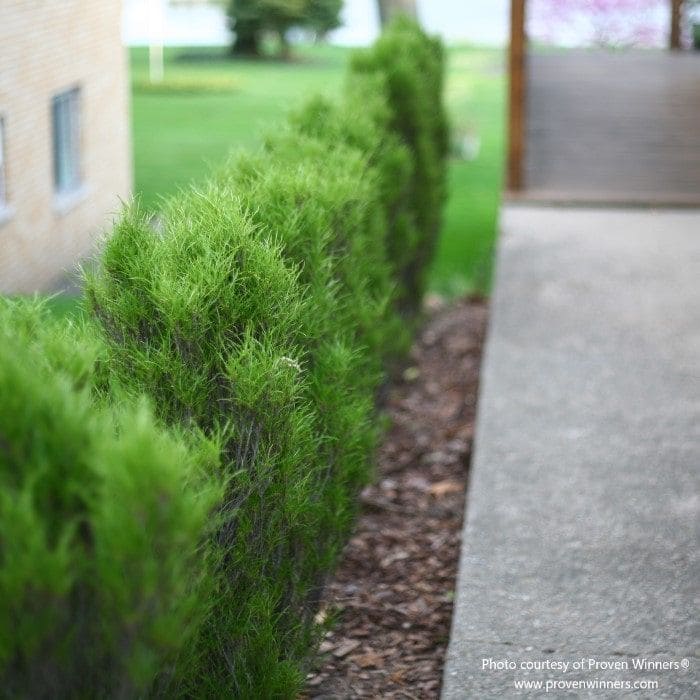
I came across this plant in a native shade garden tucked behind a museum—it was quietly swaying in the breeze, its fine, feathery foliage catching the light like lace. From a distance, it looked like a graceful little tree. Up close, it was even more charming.
Though less common, fern-leaf buckthorn has a natural elegance, especially in gardens where you want lightness without fuss.
Care Tips:
-
Tolerates partial to full shade and even poor soils.
-
Doesn’t mind drought once it’s settled in.
-
Little pruning needed—just let it take its soft, natural form.
Note: It’s not flashy, but that’s part of its charm—ideal for serene, woodland-style gardens.
#19. Snowberry
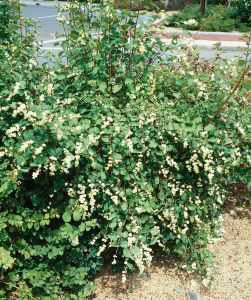
Snowberries are known for their small pink flowers and striking white berries that last into winter.
They thrive in partial shade and adapt well to a range of soil types. I love their understated beauty and wildlife appeal.
Tip: Use in naturalistic plantings—perfect for wildlife gardens where birds can enjoy the berries.
#20. Holly

There’s a large holly tree near the back of my childhood home. Every winter, it would come alive with red berries, and birds would flock to it like clockwork. We’d clip a few branches each year to make a wreath for the front door.
Now when I see holly, it brings that feeling back—the sense of home, rhythm, and season. It’s a shrub that carries history.
They thrive in partial to full shade and well-drained, slightly acidic soil. Hollies are perfect for adding structure and winter interest.
Note: Choose smaller cultivars if space is limited—many stay compact and are ideal for foundation plantings.
Final Thoughts:
Not every plant in this list has lived in my garden. Many I’ve seen in neighbors’ yards, on garden tours, in books lovingly passed down. But each one carries something I admire: resilience, elegance, or just the ability to bring a little magic to places others overlook.
So if you’ve been wondering what to do with that dim spot by the fence, or the side yard that never sees morning light—maybe now you see it as I do. Not as wasted space, but as a blank canvas. A place where beauty simply asks for softer conditions, and a gardener willing to listen.
May your shady corners be filled with quiet joy, and may something lovely always be growing—just where you least expect it.
